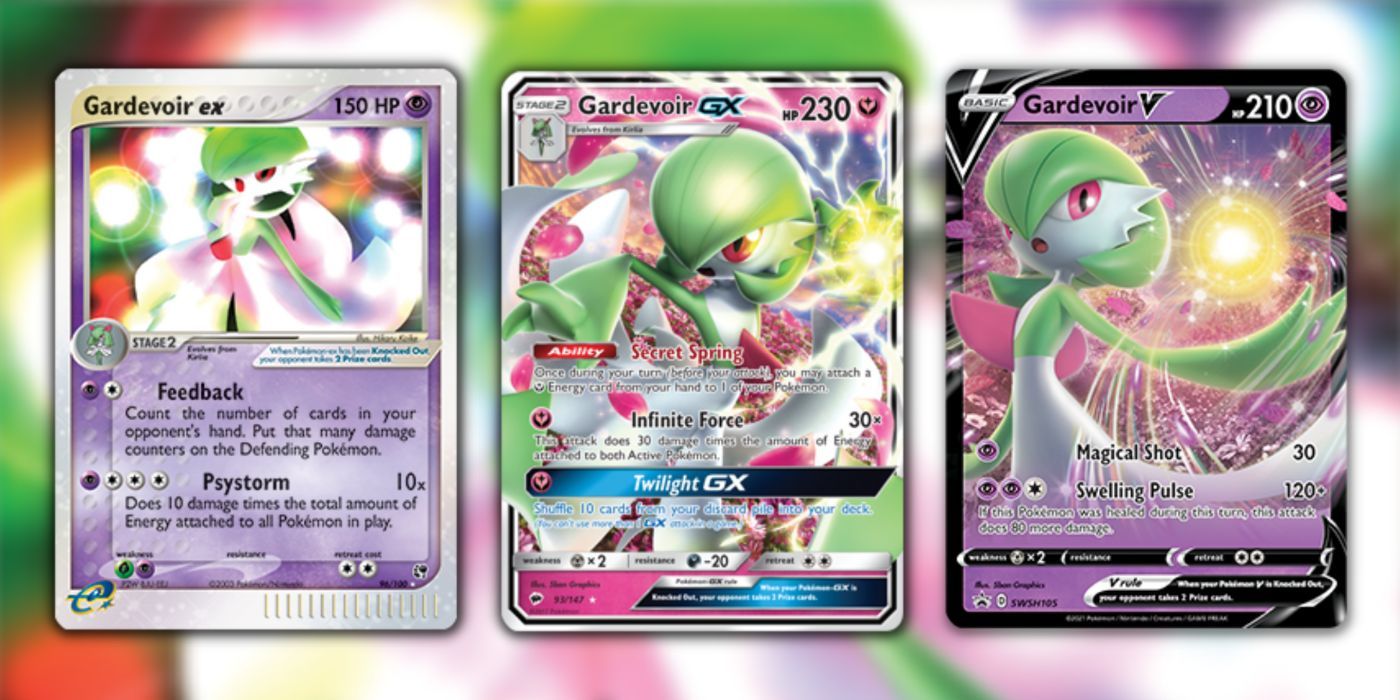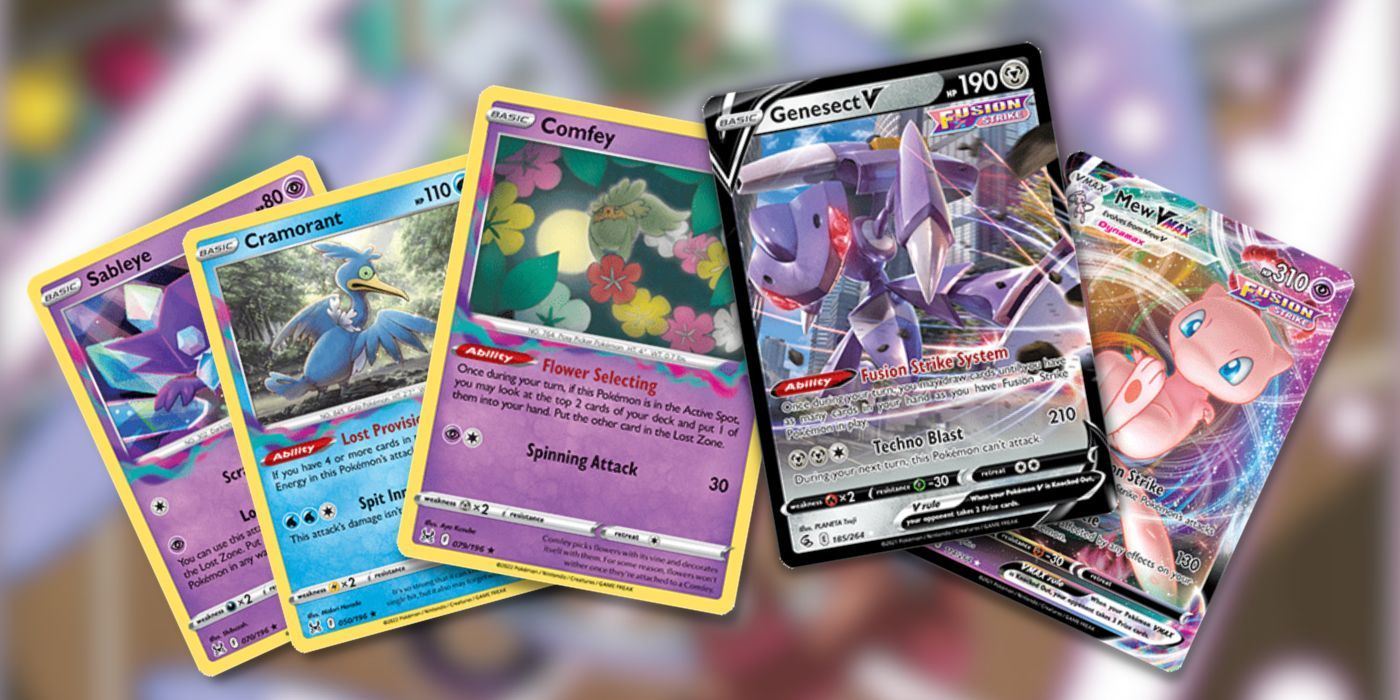Like any longstanding TCG, the Pokémon TCG has grown and evolved over the years with every new expansion release. Each year, Pokémon TCG's Standard format rotation takes place, which cycles out older card sets to make room for new ones, keeping gameplay fresh and engaging. For this reason, Pokémon TCG's metagame usually looks very different from one season to the next.
For years now, Pokémon TCG has been dominated by ultra-powerful, multi-prize Pokémon cards, typically with higher stats and far stronger abilities than normal Pokémon. In Pokémon TCG, players claim a prize card whenever they knock out an opponent's Pokémon, and the first to claim all six of their prizes win the game. Multi-prize Pokémon reward the player with two or even three, speeding up the game significantly. Now, multi-prize Pokémon make up most of the metagame, which has completely changed the way Pokémon TCG games play out. Here's why Pokémon TCG's multi-prize cards are hurting the game.
Multi-prize Cards Are a Mainstay in Pokémon TCG
Multi-prize Pokémon TCG cards were first introduced in the Ruby & Sapphire era of 2003, which featured Pokémon-ex. These are more powerful versions of Pokémon with stronger stats and abilities, but they still need to be evolved traditionally, so require a few turns of setup to play. Players receive two prize cards for knocking out an opponent's Pokémon-ex. They are powerful, but fairly balanced given their limitations, so they didn't dominate the meta at the time. However, this proved to be the start of a trend; multi-prize Pokémon became a mainstay in the series, and every Pokémon TCG series block since has experimented with a new multi-prize gimmick.
Eight years later, 2011's Black & White introduced Pokémon-EX. These are distinct cards to the lower-case "-ex" variants, and come pre-evolved, meaning no prior setup is needed to play them. Like Pokémon-ex, they also reward players with multiple prize cards for knocking them out -- and because they are so powerful, Pokémon-EX have effectively pushed traditionally-evolving cards out of the Pokémon TCG meta.
Multi-Prize Cards Rule the Pokémon TCG Metagame
Pokémon TCG's Sun & Moon set briefly brought evolution back into the game with Pokémon-GX, only to abandon it again with Tag Team Pokémon-GX cards. Tag Team Pokémon-GX featured two or more Pokémon on a single card with huge HP and damage representing their power combined. These multi-prize cards almost entirely dominated the Pokémon TCG metagame until Sword & Shield introduced the current champions, Pokémon-V.
Pokémon-V have dominated the competitive scene for a few years now, and most of the popular archetypes play essentially the same way. Pokémon-V reward players with two prize cards for knocking them out, but they can also level up into Pokémon-VSTAR or -VMAX, the latter of which rewards three prize cards. Pokémon TCG decks based on these powerful attackers employ a variety of strategies to quickly set up and deliver devastating one-hit KOs.
Without Evolution, Pokémon TCG's Aggro Decks are Rampant
Pokémon-V are overpowered, circumvent the game's tried-and-true evolution mechanics, and facilitate one-hit knockouts, making it difficult for players to oppose them with traditional Pokémon. Pokémon-V simply knock out other Pokémon too quickly for them to stand a chance, and promote aggressive archetypes with little strategy aside from racing to the finish line. None of this is good for the game, and the current Pokémon TCG meta has become somewhat stale.
With so many multi-prize Pokémon in-play, Pokémon TCG matches end far too quickly. The race to six prize cards was once a fairly substantial effort, but with every knockout yielding 2-3 prize cards, games last half as much time as they used to, if not less. Matches are fast and repetitive, and whoever gets the first knockout tends to snowball their way to victory. Many players find this gameplay loop boring, especially because every archetype has adapted to the same strategy: fast set-ups for one-hit KOs.
Evolution has always been at the heart of the Pokémon franchise, so it's disappointing to see it pushed to the wayside in Pokémon TCG. Players enjoy evolving their Pokémon, and it adds depth and strategy to the game. Evolution is engaging, exciting, and slows players down, so games aren't over so quickly. It also reduces the first-turn advantage, since regular Basic Pokémon need multiple turns to evolve.
Pokémon TCG's Prize Cards Need a Shake-up
It's rarer than ever in Pokémon TCG to see decks with strategies based on prolonging the game, such as decks that sabotage their opponent's setup or run them out of cards. A few interesting single-prize builds like Lost Zone Box managed to make a name for themselves despite multi-prize cards being so prevalent, but for the most part, Pokémon TCG's meta is overrun with aggro decks, and it's not as fun to play as it used to be.
Fortunately, it looks like The Pokémon Company is aware of the problem, as big changes are coming that should help to bring Pokémon TCG back to its roots. Pokémon TCG's Scarlet & Violet set releases on March 31, 2023, and it will reintroduce Pokémon-ex. While they still reward multiple prize cards for knocking them out, Pokémon-ex need to be evolved, which should help to significantly slow down competitive gameplay.
Multi-prize cards have been part of the game for years, so it's likely they're here to stay. But if future sets should put more emphasis on evolution, The Pokémon Company can slow down Pokémon TCG's meta and gradually reintroduce more varied gameplay with less emphasis on aggro decks and one-hit KOs.





